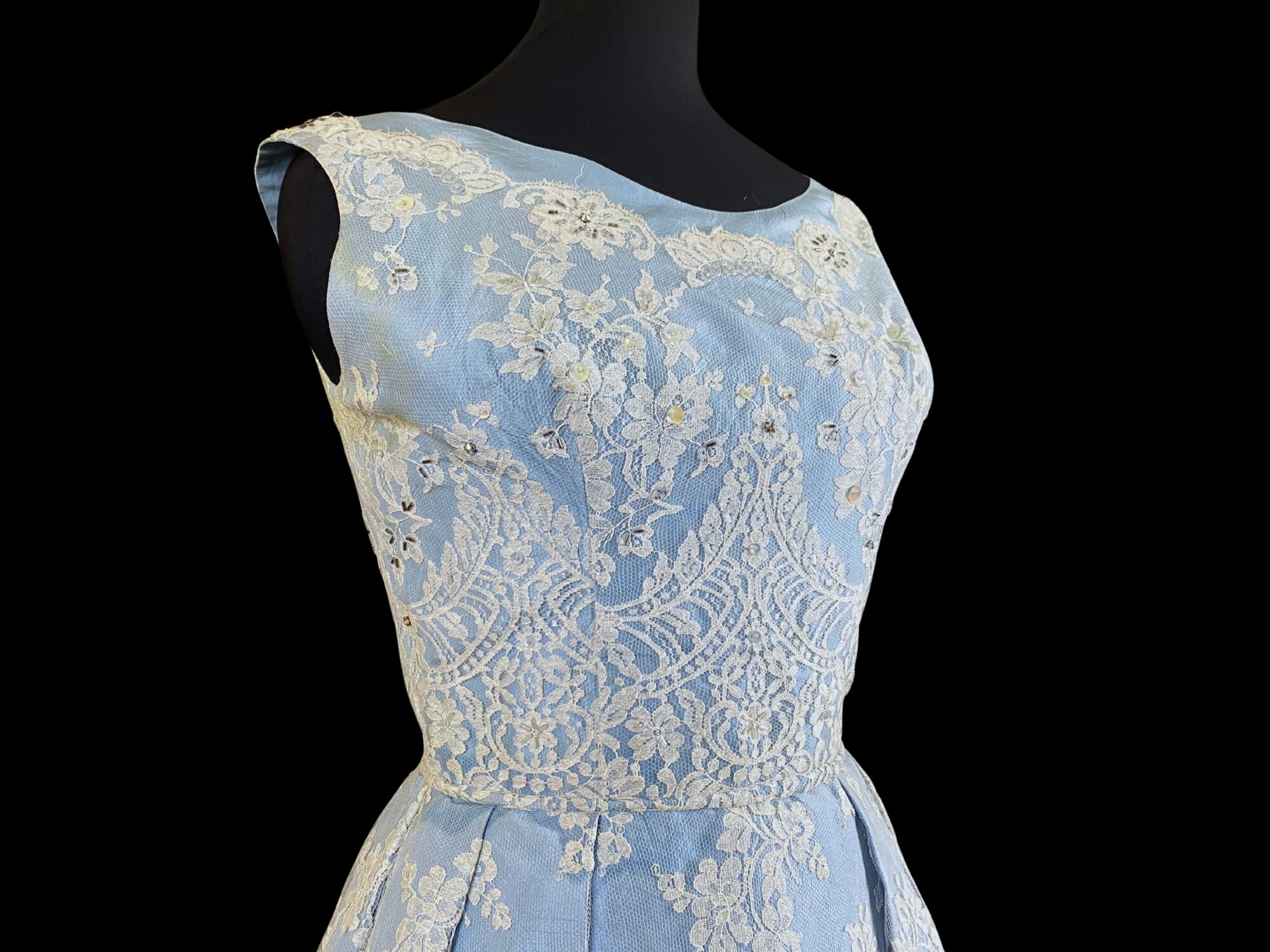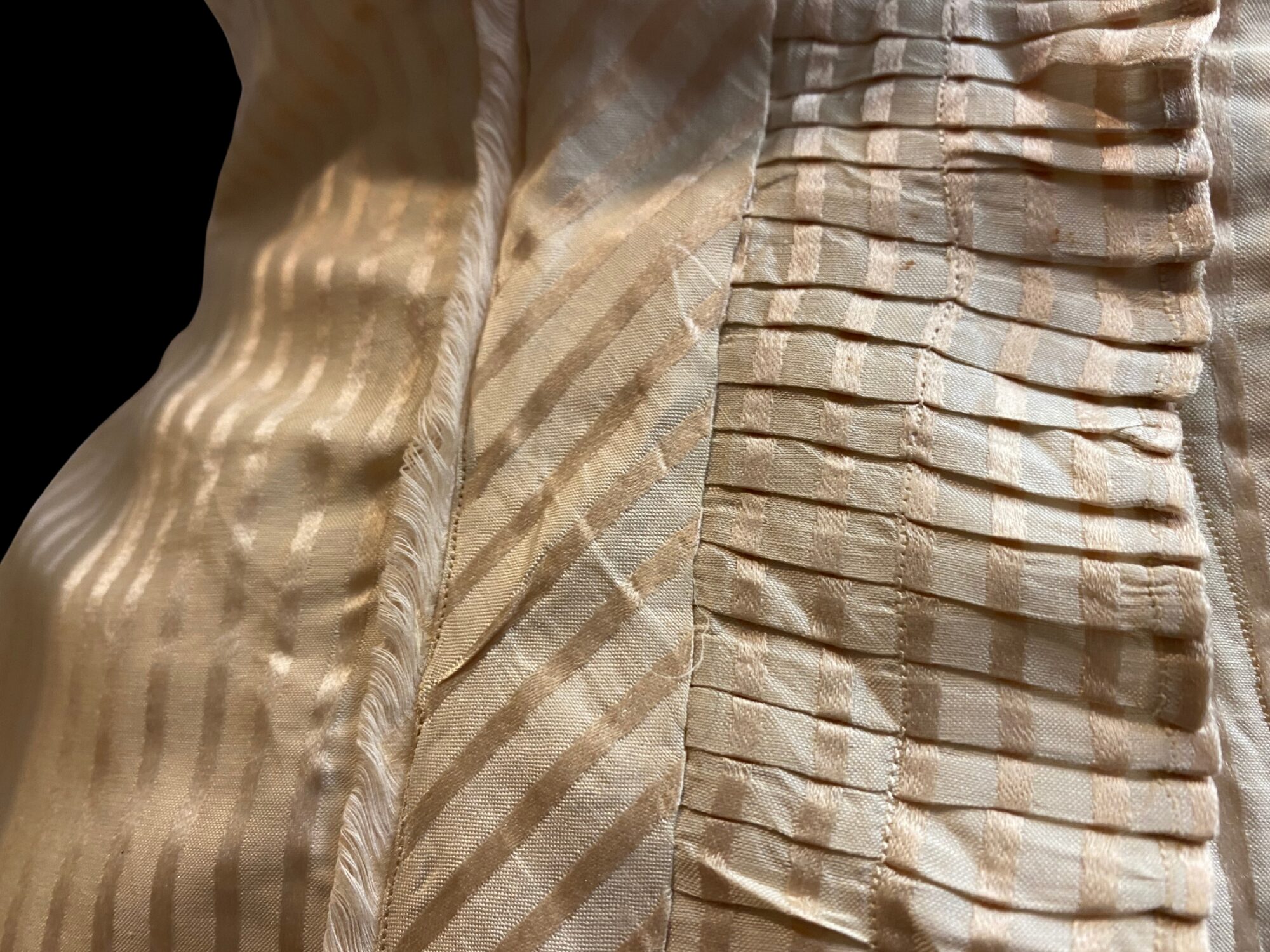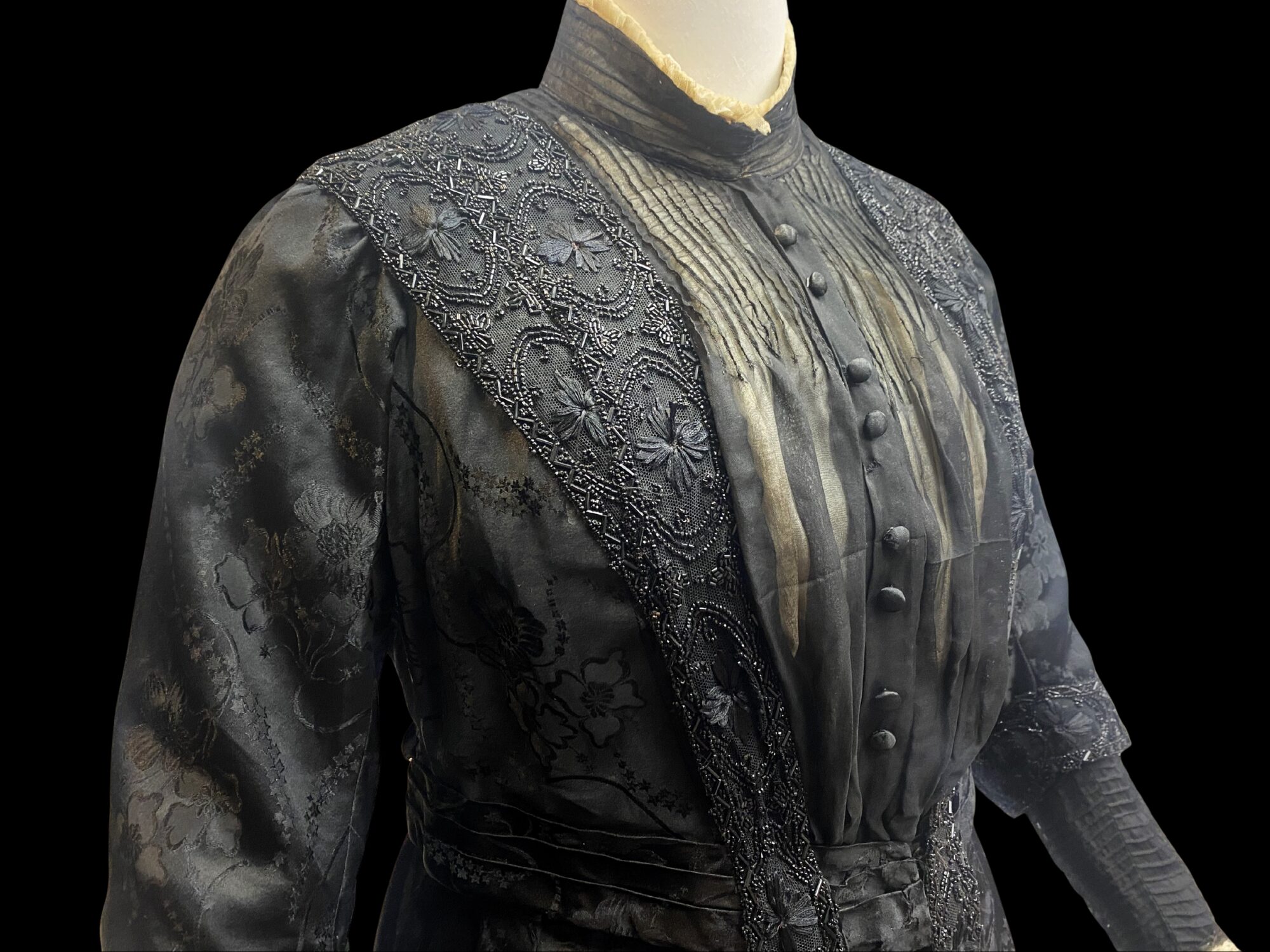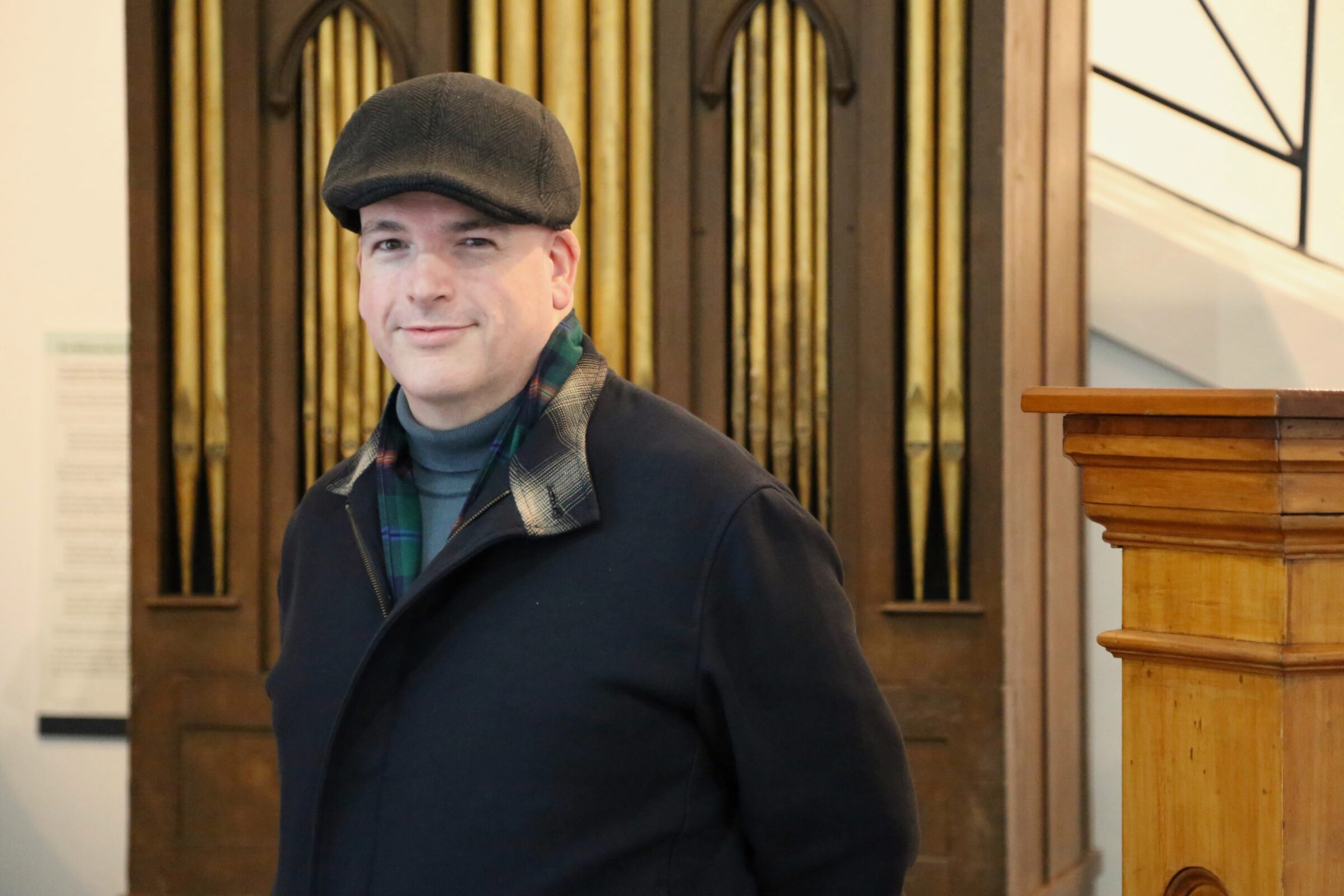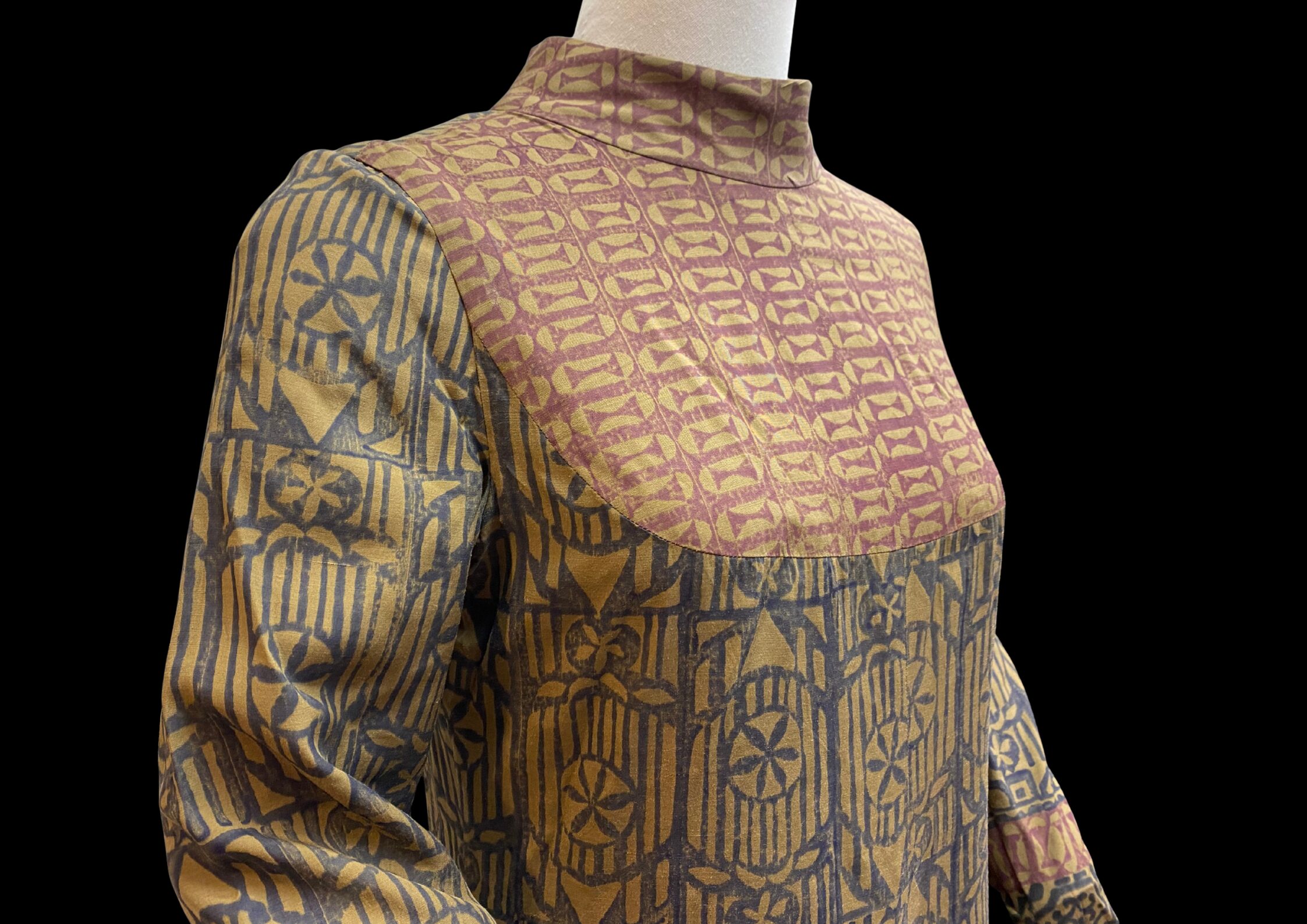Collection Stories
This glamorous black beaded dress perfectly captures the spirit of 1920s flapper fashion. Designed for freedom and movement, its loose silhouette and sheer black silk tulle fabric reflect a shift away from the tight corseting and fulsome clothing of previous decades. Flappers embraced simplicity and self-expression, and nothing says this more than shimmering beadwork and high side splits made for dancing.
Hand-beaded using a tambour needle, the dress features intricate black jet beads with vibrant floral motifs on the hips formed from shades of pink glass bugle beads. Although it is a simple dress style, hours of meticulous labour are evident in its decoration.
The dress belonged to members of the Soeter family, and was worn in the Netherlands and Indonesia where the family were connected to the Dutch Military presence. It came to New Zealand with Christiana Rietveld (born van Kesteren) who wore it to social events.
Christiana was born in Indonesia in 1929, but as her mother died shortly after childbirth she was raised in the Netherlands by her aunt Harmyntja van der Mear (born Soeter). She immigrated to New Zealand in 1952. While the original wearer is unknown, the dress may have belonged to Christiana’s aunt or her step-grandmother, Dien Soeter.
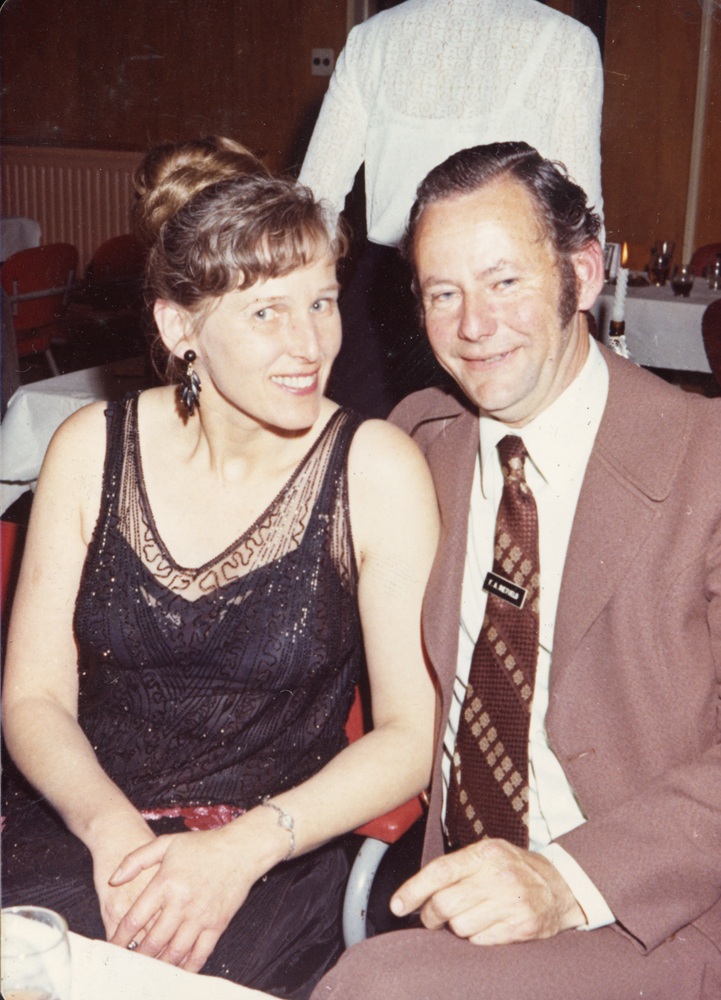
Image courtesy of Melanie Ellis
Christiana donated the dress to the Museum in 1996, shortly after it received temporary conservation work through the skill of four members of the Wanganui Embroiderers’ Guild: Heather Williamson, Maise O’Connor, Pauline Muirhead and Anne Pluck. Their work has enabled us to carry on enjoying this beautifully crafted dress.
By Trish Nugent-Lyne, Pou Tiaki/Collections & Curatorial Lead at Whanganui Regional Museum.
Evening overdress, 1920s
Handmade by unknown designed in the Netherlands or Indonesia
Made from silk tulle, chiffon, glass bugle beads and jet beads
Gift of Christiana Rietveld 1996
WRM 1996.59
Photographed by Kathy Greensides
View the full-length image


